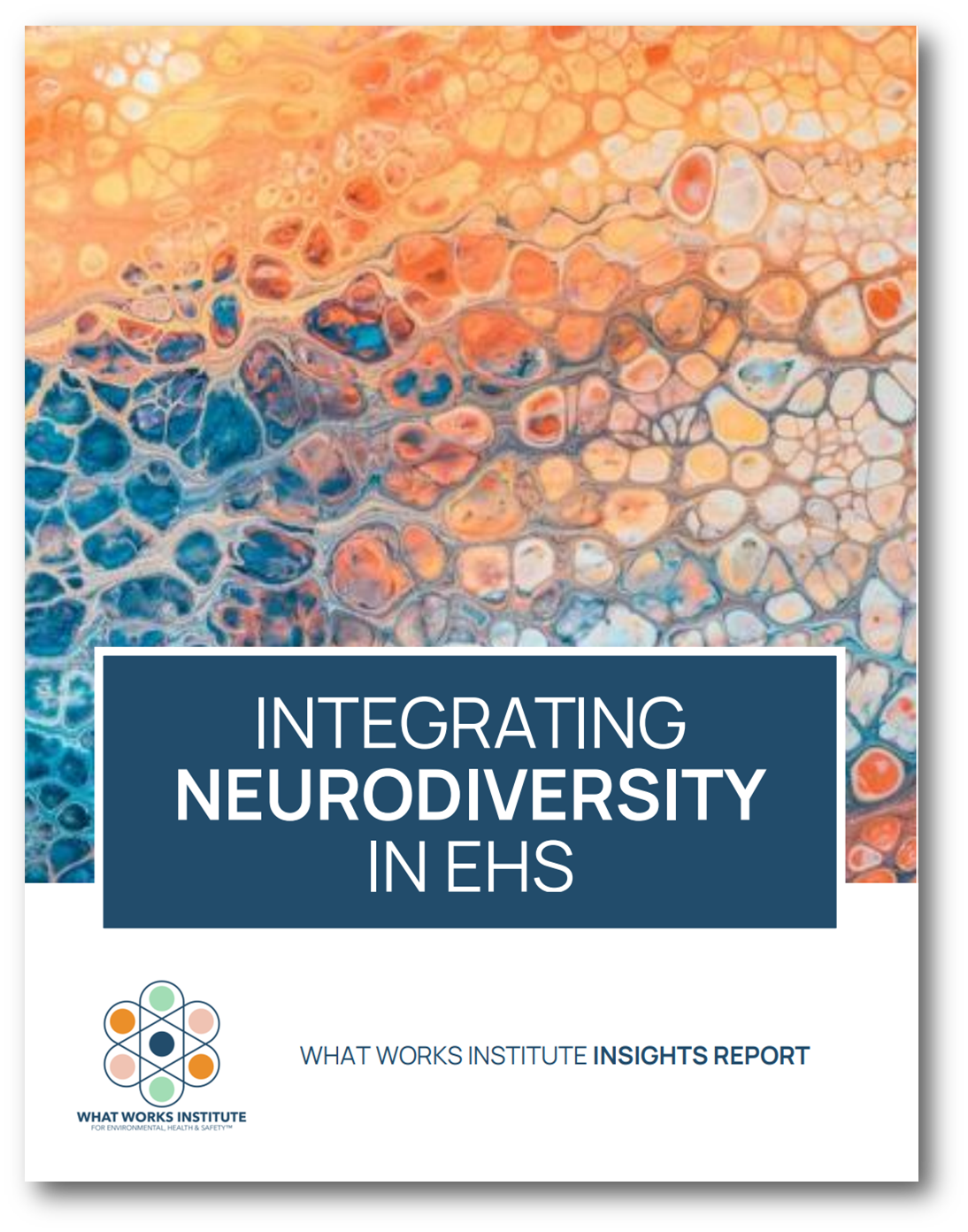
Integrating Neurodiversity in EHS
Unlocking Cognitive Diversity for Safer Workplaces
As safety professionals rethink what effective Environmental, Health, and Safety (EHS) systems look like, a growing body of evidence points to the importance of embracing neurodiversity. Roughly 1 in 5 people are neurodivergent, meaning their brains process information, perceive hazards, or communicate differently. This includes individuals with ADHD, autism, dyslexia, dyspraxia, Tourette Syndrome, and more.
Yet many traditional EHS programs still assume a single way of thinking. They rely on dense policy documents, text-heavy training, or ambiguous verbal instruction. For many workers, this can reduce understanding and engagement, two things every EHS leader depends on to maintain a safe workplace.
This insight report explores what happens when you apply a neuroinclusive lens to EHS, from training and hazard communication to emergency response, reporting, and system design.
What’s Inside
This report includes:
A breakdown of common neurodivergent profiles and how they may show up at work
A case study of one construction worker’s serious injury and how it led to safety innovation
Guidance for redesigning EHS systems to support cognitive diversity
Practical recommendations in areas like signage, sensory environments, and high-stakes decision-making
“The neurodivergent community in the workplace is like the canary in the coal mine. If there’s inefficiencies, they’re going to voice them. If there’s safety concerns, they’re going to voice them.”
Actionable Tactics You Can Use Now
From the report’s 10 focus areas, here are three simple changes you can make:
1. Rethink Training Delivery
Swap long lectures and text manuals for short, visual, interactive content. Hands-on simulations or infographics help everyone absorb critical safety protocols more effectively.
2. Redesign Reporting Options
Offer written, anonymous ways to report hazards, like a digital form with structured prompts. This creates alternatives for impromptu verbal reporting but still captures early warning signs.
3. Adjust the Physical Environment
Noise-canceling headphones, quiet break zones, and lighting controls help reduce cognitive overload, making it easier to focus on tasks that matter.
Limited Time Pricing: FREE $49
Why It Matters
This is about more than accommodation. Inclusive EHS design strengthens overall system performance, reduces injury risk, and builds psychological safety across teams. When people feel seen and supported, they’re more likely to engage, speak up, and stay.
Neuroinclusive EHS design isn’t a trend. It’s part of building safer, smarter, and more resilient organizations.


